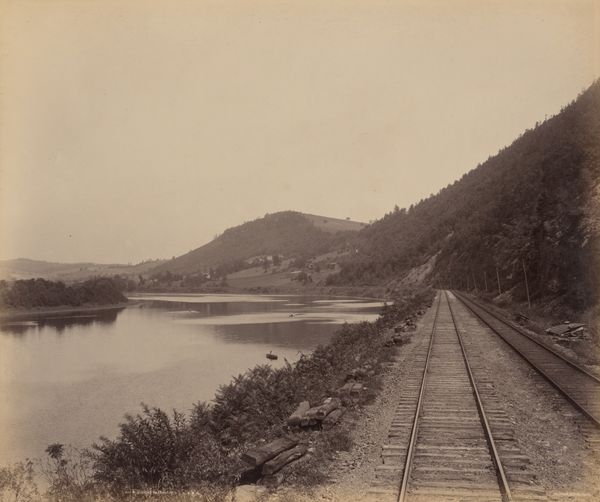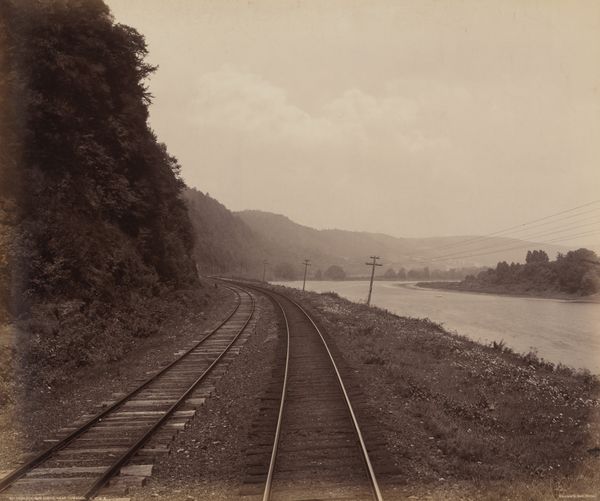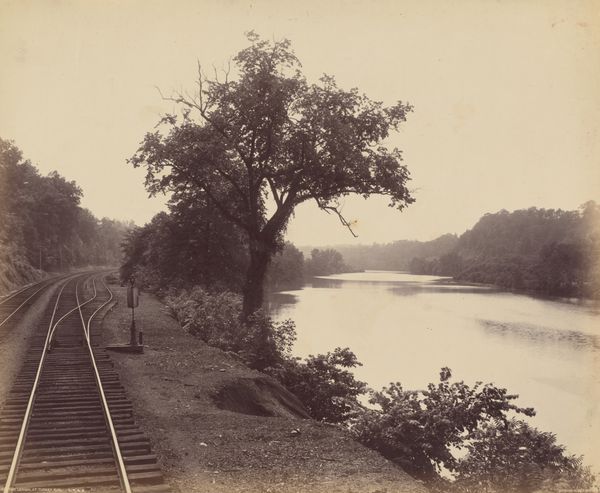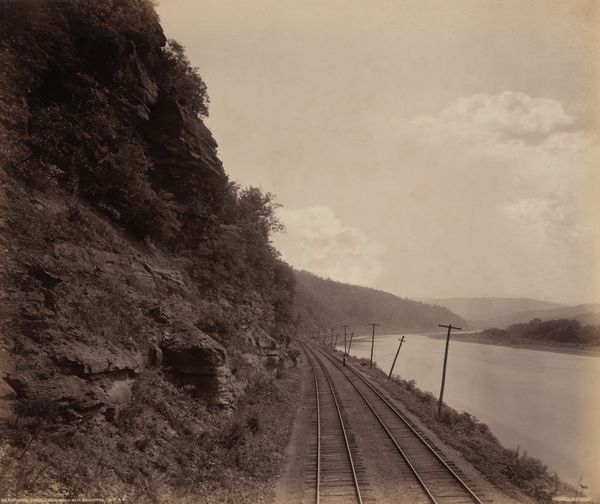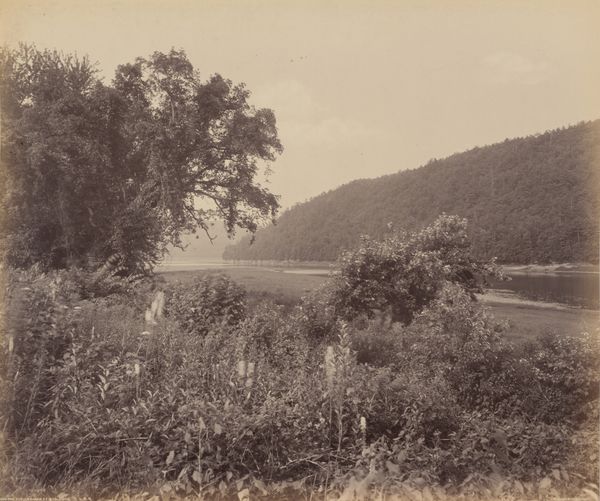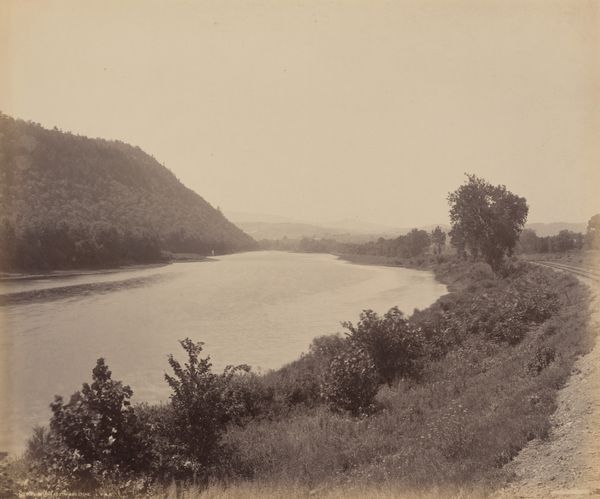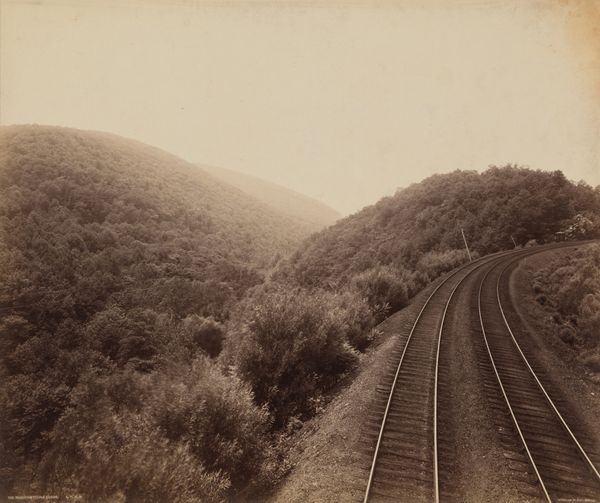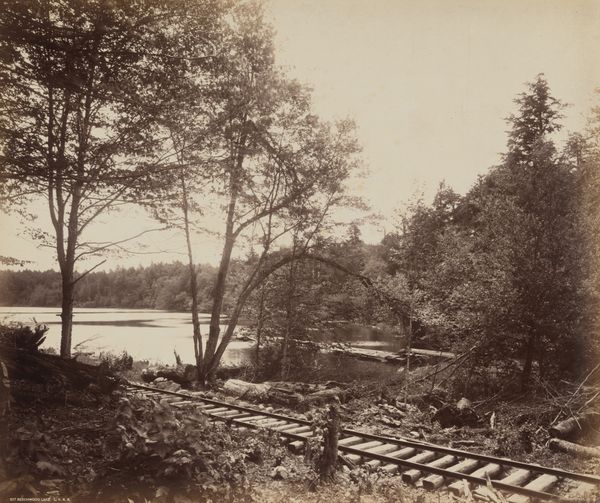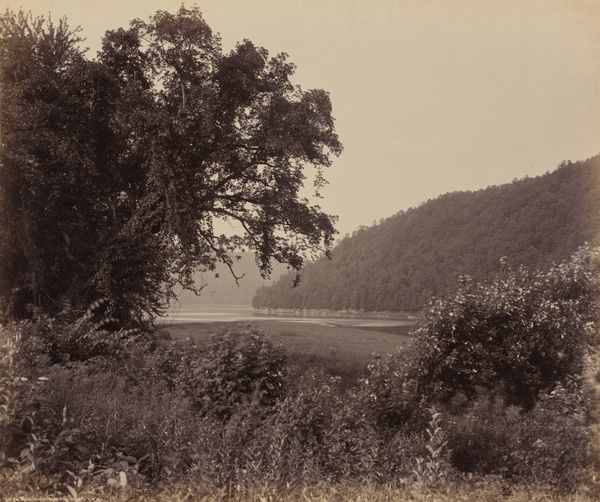
Dimensions: image: 43.7 × 52.1 cm (17 3/16 × 20 1/2 in.) mount: 49.7 × 59.1 cm (19 9/16 × 23 1/4 in.)
Copyright: National Gallery of Art: CC0 1.0
Editor: So, this gelatin-silver print, titled "East View of Standing Stone" by William H. Rau, dates to around 1895. There’s a stillness in this image. It’s sepia-toned and seems to depict a very specific place, but there's also something melancholic about it. What stands out to you? Curator: Notice how the train tracks curve, inviting our gaze deeper into the landscape? They symbolize not just physical progress, but also the encroachment of modernity upon nature. In many cultures, trees signify strength and endurance. Are the two trees acting as silent witnesses? Sentinels watching a slow, subtle change unfold? Editor: That's interesting... I hadn't considered the tension between nature and industry. The railroad seems so deliberately placed in the composition. Curator: Consider the symbolic weight of standing stones themselves. Before modern methods of architecture, these would've held immense symbolic value for societies past. The image whispers to me about human presence over vast stretches of time and cultural memory. It seems to contemplate themes of progress, change, and perhaps, even loss. Editor: So, you're suggesting the photo isn't just a pretty landscape, but a meditation on time? Curator: Precisely. It uses visual language to convey complex ideas about humanity's evolving relationship with the natural world and what we choose to remember. Rau's careful composition gives what might be considered at first a simple snapshot, lasting cultural and emotional weight. Editor: That really changes how I see the photograph. I’ll definitely consider the symbolism more carefully from now on! Curator: Indeed. It’s about training our eyes to decode what pictures say.
Comments
No comments
Be the first to comment and join the conversation on the ultimate creative platform.
